In recent years, to overcome the limitations of traditional injection molding and foam molding, gas assist injection molding technology has emerged as a new process, continuously evolving and entering a practical stage.
This technology by injecting gas into the plastic to form cavities, it reduces the weight of the molded parts while simultaneously enhancing their structural strength.
This article will delve into the principles, advantages, and application areas of gas assisted injection molding, unraveling the manufacturing mysteries of this technique for the readers.
What Is Gas Assisted Injection Molding?
Gas-Assisted Injection Molding (GAIM) is a novel injection molding process that uses inert gas at relatively low pressure to replace some of the resin in the mold cavity during the traditional molding process.
This approach is aimed at achieving superior molding performance for the finished product.
In 1983, a British development emerged from the structural foam molding process used to manufacture building decoration materials, known as the “Cinpres” process, which controlled internal pressure during molding, essentially becoming the gas-assisted injection molding process.
After being showcased at the German International Plastics Machinery Exhibition in 1986, this process was quickly accepted as a new technique and recognized as the future technology of the plastics processing industry.
By the 1990s, this technology entered the practical stage as a successful technique and has been increasingly applied in developed countries and regions such as the USA, Japan, and Europe.
The technology is hailed as a revolutionary advancement in injection molding processes and has found widespread applications in nearly all plastic part fields, including home appliances, automobiles and furniture items.
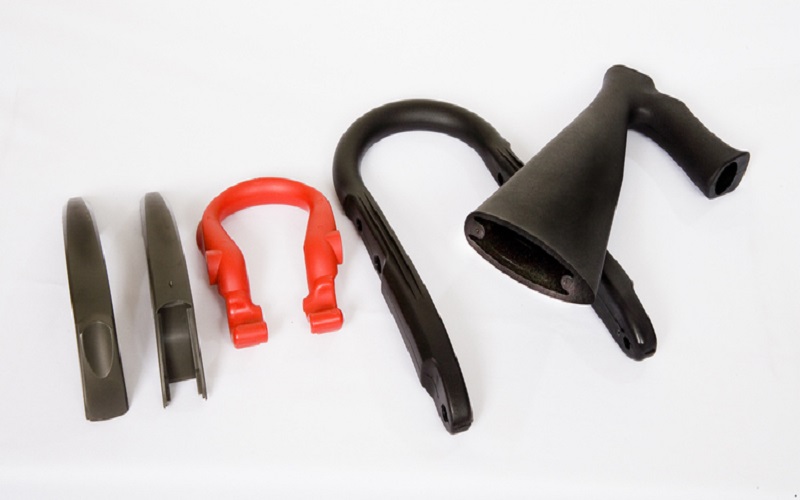
The Materials Used in Gas-assisted Injection Molding
In the gas assist moulding process, the wall thickness and surface defects of the parts are largely determined by the properties of the raw materials, and changes in process parameters have a limited impact.
Therefore, the choice of molding materials is extremely important.
Theoretically, all thermoplastics that can be used for conventional injection molding are suitable for gas-assisted injection molding, including some filled resins and reinforced plastics.
To control the formation of gas channels and prevent the gas from “blowing through” the material, the plastic should have a certain melt strength; very soft plastics like PU are not suitable.
PA and PBT types of easily crystallized plastics are particularly suitable for gas-assisted injection molding.
The most commonly used plastics in gas-assisted injection molding are PA6, PA66, and PP (usually glass fiber reinforced).
For more information, read Nylon 6 vs Nylon 66.
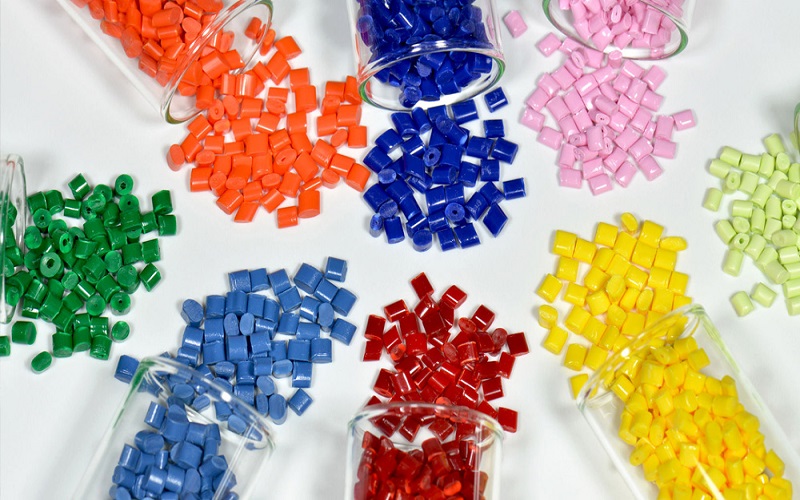
Equipment For Gas Assisted Molding
The equipment for gas assisted molding includes a gas-assist control unit and a nitrogen gas generation device.
This system is independent of the injection molding machine, with its only interface to the injection machine being an injection signal connection line.
Once the injection machine transmits an injection signal indicating the start of injection or the screw position to the gas-assist control unit, a gas injection process begins.
Another injection signal is given at the start of the next injection process to begin another cycle, and this process repeats continuously.
The gas used in gas-assisted injection molding must be an inert gas (typically nitrogen), with the highest pressure reaching up to 35 MPa, and in special cases, up to 70 MPa. The purity of the nitrogen gas should be ≥98%.
The gas-assist control unit is a device that controls the timing and pressure of gas injection.
It has a multi-group gas path design, allowing it to control the gas-assist production of multiple injection molding machines simultaneously.
Additionally, the gas-assist control unit is equipped with a gas recovery function to minimize gas consumption as much as possible.
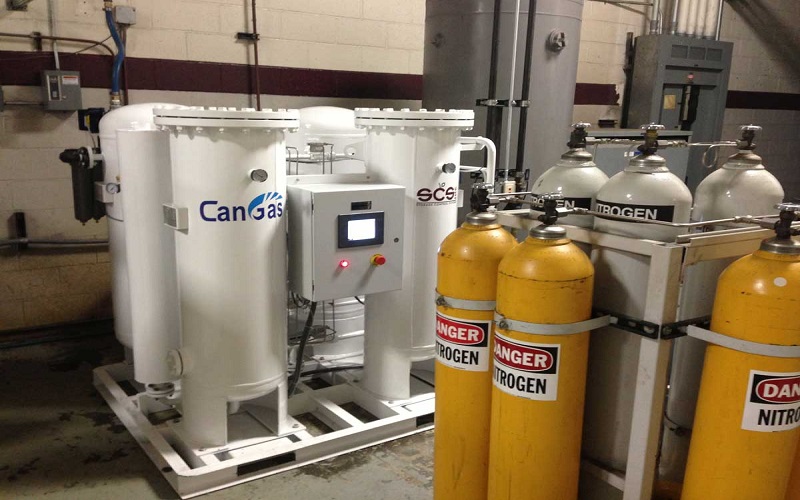
How Does Gas Assist Injection Molding Work?
The process of Gas-Assisted Injection Molding (GAIM) mainly consists of three stages:
Injection of the plastic melt
The polymer melt is injected into the mold cavity, similar to traditional injection molding, until the melt fills 70% to 95% of the cavity.
The larger the cross-section of the gas channel, the easier it is for the gas to penetrate and hollow out the material. Therefore, a larger “short shot” ratio is preferable.
Initial Gas Permeation
Compressed gas is injected into the core of the molten material. Under the drive of high-pressure gas, the flow front of the molten material continues to move forward until it fills the entire mold cavity.
The gas can be introduced through an injection component (gas nozzle) from the main runner or directly from the mold cavity into the part.
Currently, multi-stage gas pressure control methods are commonly used for gas control.
Gas Pressure Holding
The part is cooled while maintaining gas pressure.
During cooling, the gas applies pressure from the inside outwards, ensuring that the outer surface of the product tightly adheres to the mold walls.
Additionally, the gas facilitates secondary penetration to compensate for the volume shrinkage caused by the cooling and solidification of the melt.
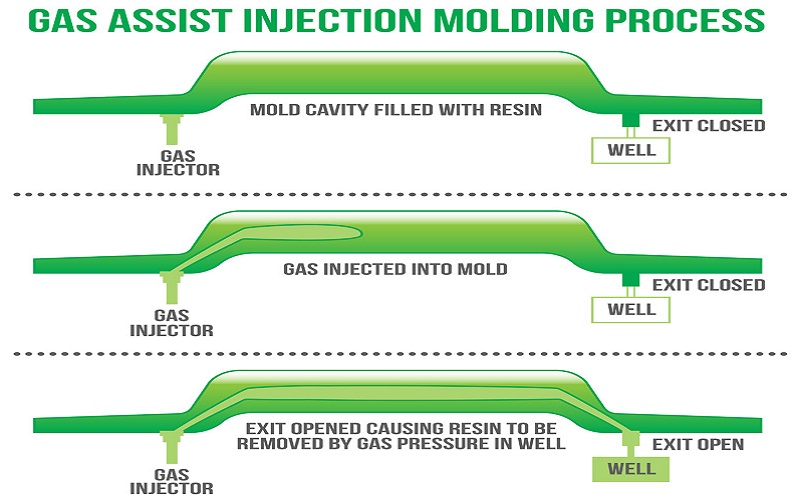
Advantages of Gas Assisted Injection Molding
Injection molding gas assisted offers several distinct advantages over traditional injection molding due to its unique process:
Reduced Warping: It lowers internal stress by efficiently distributing pressure through hollow gas channels, reducing product warping.
Elimination of Sink Marks: By applying internal pressure via gas channels, it prevents sink marks typically caused by uneven shrinkage in thicker sections like ribs and bosses.
Lower Clamp Force: The process requires a lower holding pressure, which reduces the clamp force requirement by 25% to 60%.
Material Savings: It can save up to 35% of material compared to traditional methods, mainly due to the hollow sections and reduced sprue material.
Shorter Cycle Times: By removing thicker core materials, the process reduces cooling times by up to 50%, speeding up production.
Extended Mold Life: Lower injection and holding pressures reduce stress on the mold, decreasing the frequency of maintenance and extending mold life.
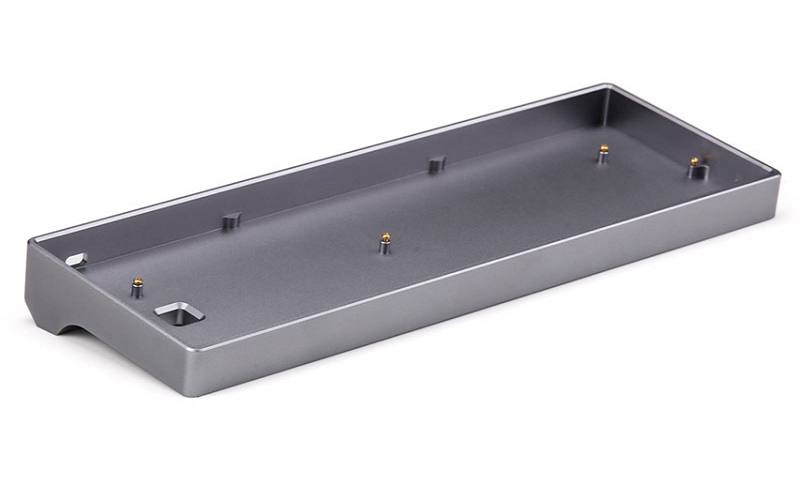
Disadvantages of Gas Assist Molding
While gas-assisted injection molding offers numerous advantages, it also has its own process defects:
Increased Process Complexity: The process of gas-assisted injection molding is inherently complex, involving the two-phase flow of polymer melt and high-pressure gas.
Complex Mold Design: This technique demands higher precision in structural and mold design, as well as greater skill and expertise from operators and process engineers.
Any design mistakes or operational errors can lead to increased costs and reduced productivity.
Higher Initial Investment: Gas-assisted injection molding requires specialized gas-assist equipment and molds, as well as the use of purified nitrogen gas, leading to higher upfront investment costs.
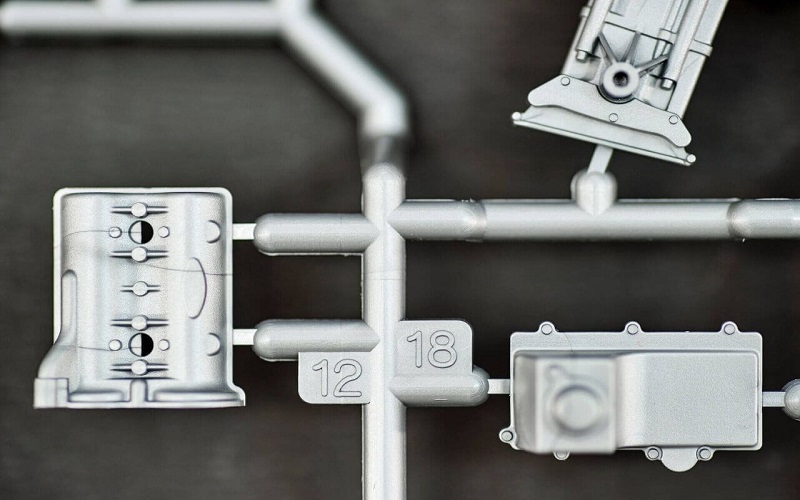
Design A Gas Assist Injection Mold
Gas assist molds are not significantly different from traditional injection molds, except for the addition of air intake components (known as gas pins) and the design of gas channels.
“Gas channels” can be simply understood as pathways for the gas, i.e., the parts through which the gas flows after entering.
The cross-section of a gas channel is generally semi-circular, and its diameter should be as small and consistent as possible, typically 2-3 times the wall thickness.
Gas channels should have larger radii at bends for smoother transition.
Gas channels can be placed at the base of ribs, self-tapping screw columns, and other structures to utilize structural components as air distribution channels for compensating shrinkage.
The gas pin is a critical component of the gas assist mould, directly affecting process stability and product quality.
The core part of a gas pin is a cylinder composed of numerous tiny slits, with the size of these slits directly influencing the gas flow.
Larger slits result in greater gas flow, which is beneficial for mold filling, but too large slits can get clogged by molten plastic, reducing the gas flow.
The clearance of the gas pin should be less than 0.02mm to prevent molten material from entering the gas pin gap.
Finally, to ensure a faster mold filling speed, the runner and gate should be enlarged.
The diameter of the submerged gate is typically about 1.5mm.
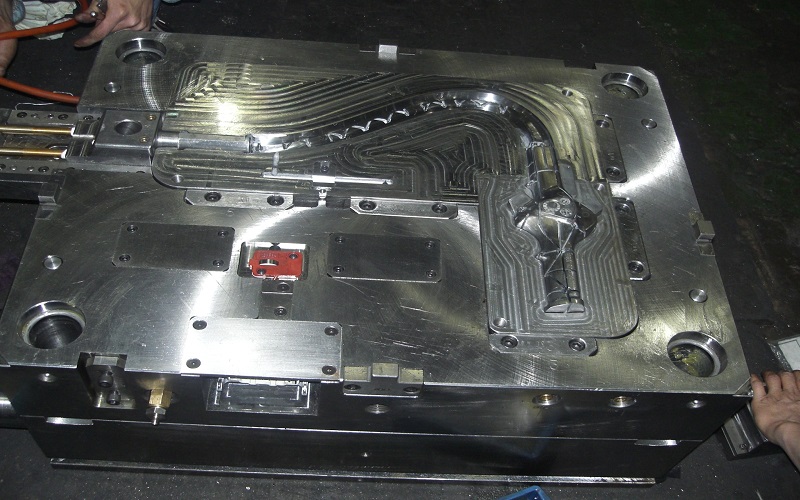
Applications Of Gas Assist Molded Plastic Parts
Tubular/Rod-Shaped Parts: Gas-assisted molding is particularly effective for saving material in tubular or rod-shaped plastic parts.
Such as car handles, seat armrests, window frames, and imitation wood furniture.
The material savings for these types of parts can be as high as 20%-40%.
Large Flat Parts: Gas-assisted reinforcement ribs are used in manufacturing large flat parts like car door panels, refrigerator trays, and interior and exterior automotive trim.
This technique can eliminate warping and deformation caused by residual stress in flat parts, thereby enhancing the strength of the components.
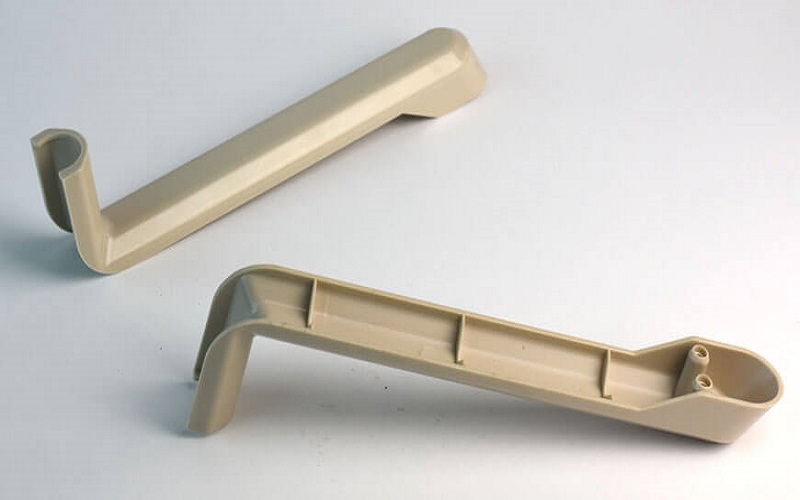
Conclusion
Gas-assisted injection molding, as a significant technology in the modern field of plastic processing, is suitable for manufacturing large, complex, or structurally strong plastic parts.
It offers more possibilities in terms of material savings, enhancing product quality, and expanding design options.
Choose FOWMOULD for one-stop comprehensive injection molding services, creating the highest quality injection molded products!
